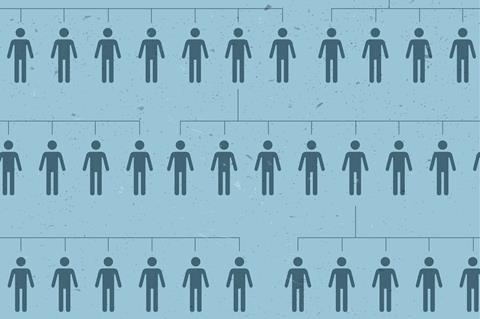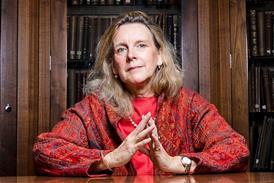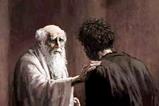Palestinians are not Arabs by descent. Could their true identity provide a path towards peace in the Middle East today?

When Jews started returning to their ancient homeland in large numbers just over a century ago, they made the same mistake as their ancestors in Ezra and Nehemiah’s generation: they viewed the people living there as enemies, failing to recognise that most of them were descendants of fellow Jews.
The Bible states this clearly, though we might miss it. When the Israelites were conquered by Babylon in the sixth century BC, not all of them were taken into captivity. Those from rich families (including Daniel) were taken first, followed by educated people (2 Kings 24:14-16; Jeremiah 52:28-30). They were replaced by ruling classes from neighbouring countries. But the poor were left where they were.
This same majority of Israelites appointed Jehoahaz as their king (2 Chronicles 36:1) before he, too, was taken away. They were still there when the exiled Israelites returned. But Ezra spurned them, and the returning exiles distanced themselves from them, calling them “the people of the land” (Ezra 4:4, ESV). Although the general population had always been called this, the name was now used derisively.
Staying put
Some of the Jews who had been left behind may have forgotten or abandoned their God, but most kept their traditional worship and even taught incoming foreigners how to worship the God of Israel. But when they and their foreign converts offered to help rebuild the temple, they were rebuffed by the returning exiles and became their “enemies” (Ezra 4:1-4).
The rejected “people of the land” created issues for Nehemiah which he dealt with by making two major changes to God’s Law. The first concerned the need for funds to rebuild the temple and city walls. Moses expected a payment from every male above the age of 20. This would probably have been sufficient if Nehemiah had included “the people of the land”. But he rejected help from those who had not been exiled. So, to raise enough money, he changed this into an annual tax (Exodus 30:12-16; Nehemiah 10:32).
The second concerned intermarriage. Previously, Moses had forbidden marriage with people from the corrupting religions of some Canaanite nations (Deuteronomy 7:1-5), which Ezra called “the peoples of the lands” (Ezra 9:1, ESV). But there was no law to avoid marriage with all foreigners. Jesus’ family tree includes Ruth from Moab and Rahab from Jericho (Matthew 1:5). Moses himself married a Midianite and a Cushite (Exodus 2:15-21; Numbers 12:1).
However, Nehemiah’s new rule made a subtle change: it forbade the Israelites from marrying “the peoples of the land” (Nehemiah 10:30, ESV) – which isn’t the same as the “people of the land” nor the “peoples of the lands”. This was interpreted to include all foreigners, plus any Jews who had never been exiled.
This group became a separate nation – the Samaritans. They were despised by all Jews, except Jesus. Even though his earthly ministry was aimed at “the house of Israel”, he still had a successful mission in Samaria (Matthew 15:24, ESV; John 4:5-42). Presumably he knew that Samaritans were Israelites too.
The same mistake
When the Romans destroyed Jerusalem in AD70, they imposed crippling taxes on Palestine. Most Jews with money left the country, leaving behind only farm owners and those too poor to travel. Many Jews who remained became Christians during the first few centuries, and Caesarea became an important centre of Christian learning. Later, Muhammad’s armies persuaded most Palestinians to become Muslims. However, when modern Jews started returning, about a tenth were still practising Judaism.
Palestinians are closely related to descendants of the Jews who never returned from Babylon
Modern Jews returning from all over the world since the 1880s have repeated the mistake made more than 2,500 years ago – although this time it is more understandable. They welcomed black Jews from Ethiopia but refused to recognise their neighbours in Palestine, even though they mostly looked exactly like them. Instead, they called them ‘Arabs’. But real Arabs know they are ethnically different. Most Arab countries don’t permit these Palestinians to integrate with their population, keeping them in refugee camps.
A shared heritage
So, who are these Palestinians? Modern genetic studies have concluded they are Jews. The Jewish newspaper Haaretz summarised the results of three large, independent studies carried out in 2010 and 2012, which all came to the same conclusion: samples from a wide range of populations showed that Palestinians are, genetically, closely related to descendants of the Jews who never returned from Babylon. They are even closer than Ashkenazi and Sephardic Jews, who have gained a lot of European genes (see here).
Palestinians are therefore Jews. Few now practise Judaism, but that is also true for the Jewish immigrants to Israel. Only 23 per cent of Jews are found in a synagogue on an average week. But both populations are descended from practising Jews.
These genetic studies are scientifically conclusive but largely ignored or rejected by both populations, who now hate each other.
Part of the solution may lie in the hands of the friends and relatives outside the land of Israel. Just as Nehemiah’s generation needed money to rebuild its defences, Israel needs money to survive among enemies. If the friends of both sides stopped supplying money for offensive weapons, perhaps fewer new enemies would be created whenever the deaths of parents and siblings inspire revenge. The UK government has made a start by refusing to supply weapons that could be used offensively in Gaza.
The Church can also help. When our hearts turn to Bethlehem this Christmas, we can pray for eyes to be opened and for the healing of hatred between these long-separated families who refuse to recognise each other. The tragedy of more than 1,000 Jews killed on 7 October 2023 has been compounded by the deaths of more than 40,000 Gazans who have the same Jewish ancestors.







































No comments yet